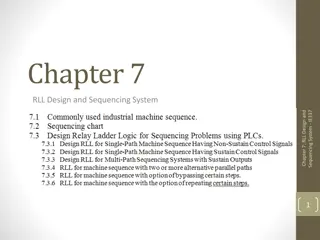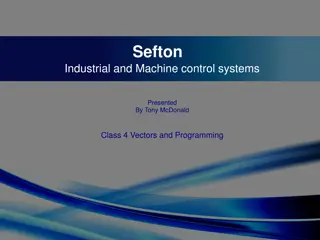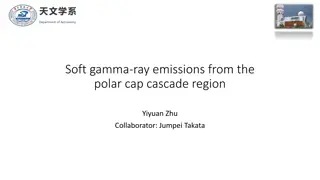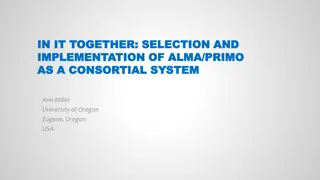Understanding Cascade Control Systems in Industrial Processes
Cascade control systems play a crucial role in improving process control efficiency by incorporating feedback loops within feedback loops. This type of control architecture helps to better handle disturbances and variations in the process by creating secondary loops that monitor specific parameters. Through examples like feedback control systems, cascade level feedback systems, and simple level feedback systems, we can see how these systems contribute to better control and regulation in industrial settings.
Uploaded on Sep 26, 2024 | 0 Views
Download Presentation

Please find below an Image/Link to download the presentation.
The content on the website is provided AS IS for your information and personal use only. It may not be sold, licensed, or shared on other websites without obtaining consent from the author. Download presentation by click this link. If you encounter any issues during the download, it is possible that the publisher has removed the file from their server.
E N D
Presentation Transcript
Basics of Cascade Control EMEC125 Lab 02
Basic Feedback Control Feedback control incorporates feedback that assists in controlling a process. Disturbance + Set Point Controller Output - Measurement
Basic Concepts TC 1 Sun Only heating is needed. Heat provided by steam radiator and forced air. Temperature xmitter is a conventional thermostat. Conventional feedback. Disturbances: Inlet air temperature. Flow rate of steam. Flow rate of air in the room. Variations of heat load in the room. External affects. Temperature of the radiator. Steam Air at variable temperature and flow rate Condensate Large Room TT Cold air return 1
Basic Feedback Cascade Control Cascade control is a control loop within a control loop. http://controlguru.com/wp-content/uploads/2015/08//cas-blockdia-big.jpg http://controlguru.com/the-cascade-control-architecture/
Basic Concepts TC 1 Sun Only heating is needed. Heat provided by steam radiator and forced air. Temperature xmitter is a conventional thermostat. Cascade control secondary loop monitors the incoming air temperture. Disturbances: Inlet air temperature. Flow rate of steam. Flow rate of air in the room. Variations of heat load in the room. TC 2 TT 2 Steam Air at variable temperature and flow rate Condensate Large Room TT Cold air return 1
Simple Level Feedback System Several streams of liquid flowing into the surge tank. Surge tank is feed into a distillation column. Simple feedback system senses tank level and adjusts valve opening. Disturbances can include: Variations in inlet flow. Changes in pressure in the distillation column. Changes in distillation pressure cause pressure drop across the valve which affects flow. Varying flows LT LC 1 1 Feed surge tank I P Column under variable pressure
Cascade Level Feedback System Several streams of liquid flowing into the surge tank. Surge tank is feed into a distillation column. Monitors feed flow rate and can respond to changes in pressure without waiting for level changes The flow is providing a set point for the valve and can modify the flow rate before the level change in the surge tank is detected. Varying flows LT LC 1 1 Feed surge tank FC 2 FT I P 2 Column under variable pressure
References Control Guru Practical Process Control. (n.d.). Cascade Control For Improved Disturbance Rejection. Retrieved October 27, 2016, from Control Guru Practical Process Control: http://controlguru.com/the-cascade- control-architecture/: Image URL: http://controlguru.com/wp-content/uploads/2015/08//cas-blockdia- big.jpg























